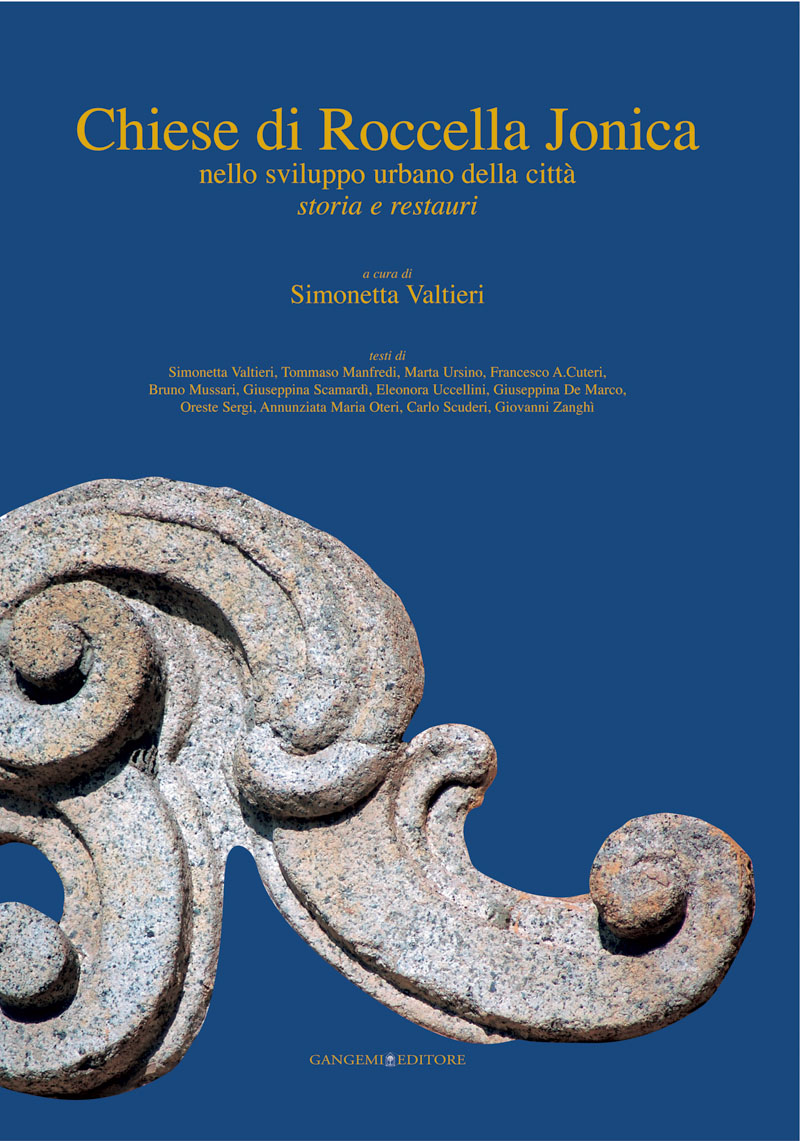
75,00 €
Chiese di Roccella Jonica
nello sviluppo urbano della città. Storia e restauri
A cura di: Valtieri Simonetta
Autori: Valtieri Simonetta, Manfredi Tommaso, Ursino Marta, Cuteri Francesco A., Mussari Bruno, Scamardì Giuseppina, Uccellini Eleonora, De Marco Giuseppina, Sergi Oreste, Oteri Annunziata Maria, Scuderi Carlo, Zanghì Giovanni
Formato: 24 x 34 cm
Legatura: Cartonato
Pagine: 368
Anno edizione: 2006
ISBN: 9788849210149
EAN: 8849210140
UB. INT. : T443H V02b V15h V92c BRAMP2
Contenuto
Le chiese di Roccella Jonica, che oggi si presentano pesantemente trasformate, abbandonate o allo stato di rudere, celano una storia secolare manifestata nei vari periodi artistici e culturali, che nel volume vengono ricostruiti attraverso la ricerca archivistica e una attenta analisi in situ. Sono emersi nuovi dati, come la veduta più antica finora conosciuta di Roccella rinvenuta a Firenze, o l’apprezzo del 1707 ritrovato a Napoli, che ci consente di ricostruire i percorsi viari della zona più antica fortificata, che accoglie il palazzo Carafa, il cui edificato attorno è pressoché scomparso.
Lo studio del patrimonio ecclesiastico consente di abbracciare trasversalmente altri temi della storia cittadina – a cui dalla fine del ‘500 è incardinato il principato dei Carafa – soprattutto le dinamiche del suo sviluppo urbano nel tempo. Infatti le chiese non sono solo testimonianze di devozione e religiosità, ma rappresentano tradizionalmente anche i fulcri dell’aggregazione sociale intorno ai quali si insediano i nuclei abitati, divenendo generatori della crescita, che a Roccella dalla zona alta si espanderà verso il borgo e la marina, con l’abbandono progressivo della città fortificata e lo sviluppo verso il mare.
Viene anche affrontato il problema dei restauri attraverso i quali si dovrebbe attuare la conservazione e il tema essenziale della manutenzione e vengono sperimentate le nuove tecnologie nel campo della valorizzazione del patrimonio architettonico, applicate nella ricostruzione “virtuale”, scientificamente fondata sui catasti storici, dell’abitato della città fortificata.
I testi sono il frutto di una ricerca coordinata che ha coinvolto insieme ai ricercatori universitari figure più giovani, e che si colloca all’interno di un più vasto progetto finalizzato alla conoscenza, riqualificazione e valorizzazione del patrimonio storico artistico di un centro urbano del territorio calabrese della Locride.
The churches of Roccella Jonica, that today look heavy transformed, abandoned or ruined, hide a story long several centuries which found its expression in many artistic and cultural periods, that the book reconstructs thanks to archive researches and in situ analyses. New data have emerged, like the most ancient view of Roccella found in Florence, or the «apprezzo» of 1707 discovered in Naples, that made it possible to understand the road network of the most ancient fortified area. The Carafa Palace is situated in that part of the city where the surrounding built-up area has almost disappeared.
The study of the ecclesiastical heritage allows to comprehend other topics of the city history, to which from the end of the sixteenth century the Principality of the Carafas is hinged. The most important topic concerns the dynamics of the urban growth over time. In fact the churches are not only evidences of devotion and religiousness, but at the same time they traditionally represent the centres of social aggregation around which new centres are usually settled: so they have become growth engines. In Roccella the original settlement will grow from the high part of the city towards the village and seacoast, with the progressive abandonment of the fortified city and the expansion towards the waterfront.
Furthermore, the book deals with the subject of restoration, through which conservation actions should be put into effect, as well as the important topic of maintenance. The book is also about the experimentation of new technologies for the treasuring of the architectural patrimony, applied in the “virtual” reconstruction, scientifically founded on the historical Cadastre of the fortified city.
The articles of the book are the result of a coordinated research which involved university researchers and junior fellows. The research is part of a wider project finalized to the knowledge, rehabilitation and treasuring of the artistic historic heritage of a urban centre of the Locride, a sub-regional area of the Calabria region.
Parole chiave
Condividi su












